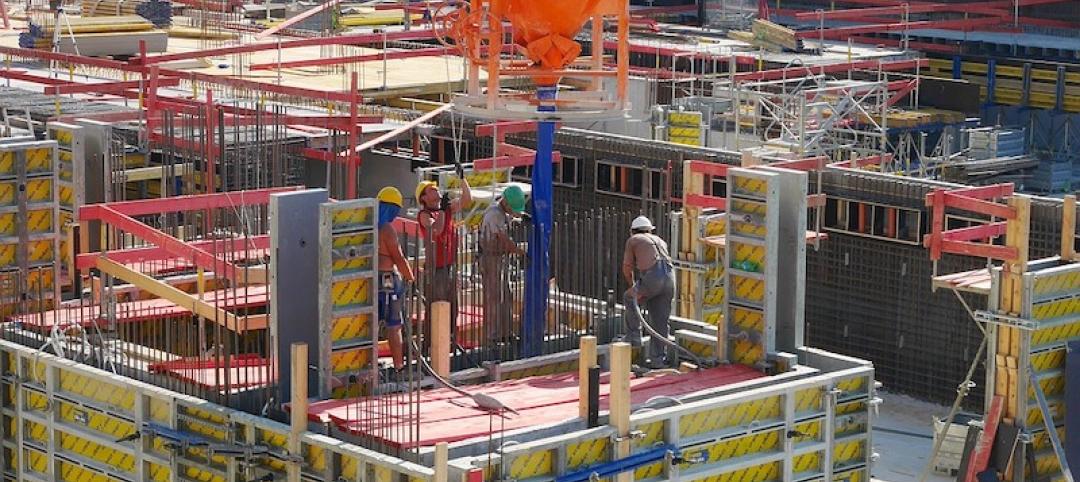Construction employment climbed by 110,000 in March as the industry recovered from severe winter weather that pushed employment down by 56,000 in February, according to an analysis by the Associated General Contractors of America of government data released today. Association officials said they were encouraged by the recent job gains and the potential for new infrastructure investments. But they cautioned that rising prices and erratic delivery schedules for key construction materials—as documented in their recent Construction Inflation Alert–and continued project cancellations could undermine the sector’s recovery.
“The rebound in March is certainly good news, but contractors face growing challenges that imperil further growth in nonresidential employment,” said Ken Simonson, the association’s chief economist. “In fact, industry job gains in the first quarter of 2021 as a whole have slowed sharply from the second half of 2020.”
Construction employment in March totaled 7,466,000, which was 182,000 employees or 2.4% below the most recent peak in February 2020. Over the past three months, the industry added 66,000 jobs, an average of 22,000 per month. In contrast, construction employment increased more than three times as fast from June to December last year, with an average gain of 76,000 jobs per month, the economist noted.
Nonresidential construction is experiencing headwinds from postponed and canceled projects, steep increases in materials costs, and lengthening delivery times. Simonson pointed out that the nonresidential sector—comprising nonresidential building, specialty trades, and heavy and civil engineering contractors—remains 231,000 jobs or 4.9% shy of the pre-pandemic peak set in February 2020, whereas employment among residential building and specialty trade contractors is 49,000 or 1.6% above the February level.
Unemployment in construction remains elevated. A total of 835,000 former construction workers were unemployed in March, up from 658,000 a year earlier and the highest for March since 2014. The industry’s unemployment rate in March was 8.6%, compared to 6.9% in March 2020.
Association officials said the best way to ensure continued construction job gains was for Congress to act on the President’s infrastructure funding recommendations without the tax and regulatory additions that would imperil broader economic growth. They also continued to call for the removal of tariffs on key construction materials and federal measures to address port and shipping backups.
“It will take more than nice weather for the construction industry to keep adding jobs this year,” said Stephen E. Sandherr, the association’s chief executive officer. “Investing in infrastructure, avoiding needless new regulations and counterproductive tax hikes, and fixing the supply chain will help the industry create many more high-paying construction career opportunities over the coming months.”
View the Construction Inflation Alert.
Related Stories
Urban Planning | Jul 8, 2019
U.S. cities experience ‘Doppler shift’ in walkable urban development
The walkability trend is spreading to urbanizing suburbs.
Codes and Standards | Jun 27, 2019
Construction workers need continuous skills upgrades
A report by Autodesk and Deloitte focuses on how workers can succeed in an automated world.
Codes and Standards | Jun 27, 2019
Updated standard for liquid applied flashing for exterior wall openings released
AAMA document establishes minimum performance requirements.
Codes and Standards | Jun 27, 2019
Public restrooms being used for changing clothes, phone conversations, and 'getting away'
About 60% of Americans use a public restroom one to five times a week, according to the latest annual hand washing survey conducted by Bradley Corporation.
Codes and Standards | Jun 21, 2019
Green Globes 2019 accepted as a revised American National Standard
Advances include language on resilience, life cycle cost analysis, moisture control analysis, health, and effectiveness.
Codes and Standards | Jun 14, 2019
Reports from Intl. Code Council focus on expanding use of shipping containers as building materials
Three companies show compliance for using containers for housing.
Codes and Standards | Jun 13, 2019
Report explores potential for rope-less and multidirectional elevators in tall buildings
Technology can enable cities to be more interconnected, efficient, and accessible.
Codes and Standards | Jun 12, 2019
USGBC-LA launches Net Zero Accelerator
Goal is to enable building tech market adoption for a net positive future.
Codes and Standards | Jun 11, 2019
BREEAM USA In-Use standard to be released this fall
Will expand to include residential and multifamily for assessment and certification.
Codes and Standards | Jun 10, 2019
Intl. Code Council releases Natural Disaster Preparedness Guide
Provides tips for staying safe during and after a hurricane or severe weather.

















